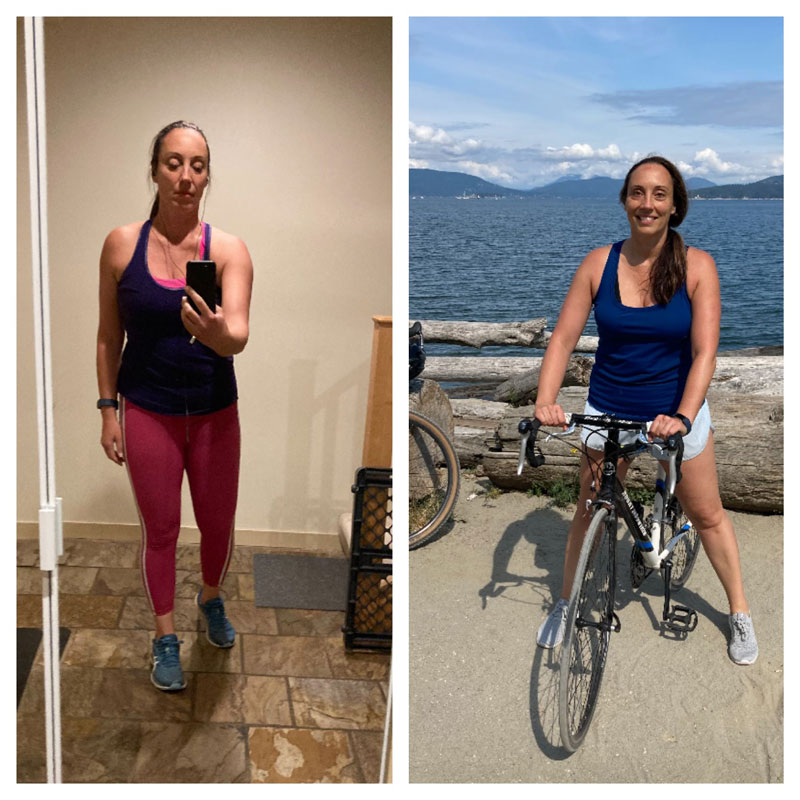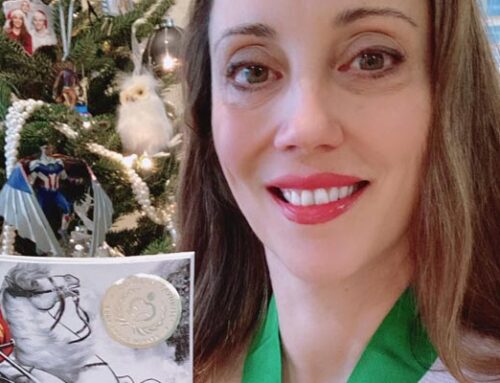*Trigger warning: Article will speak to restrictive eating patterns and diet culture*.
After 16 months, this is my third attempt at writing this blog.
Perhaps because it is so personal in nature, and so wrapped in shame and self-loathing, it’s taken me this long.
When I began to blog at the height of the pandemic, my focus was clear: how individuals can adopt change management tools and methodologies to become unstuck and achieve personal goals in their lives. I shared many instances of how this propelled me forward in writing my book, in setting up my blog, and in delivering a TEDx talk on thriving in uncertainty.
How ironic that it has been 16 months since I’ve been able to put pen to paper and finish this one piece.
I wanted to save the mighty ADKAR tool for something big!
Developed by Prosci [1], The ADKAR model [2] is a simple yet powerful tool underscoring the outcomes an individual needs to achieve before an organizational change can succeed. This clever acronym stands for awareness, desire, knowledge, ability, and reinforcement. It posits that change happens one person at a time within organizations- and that in attending to these steps, you can move individuals through the transition towards your desired future state.
What if the steps in the ADKAR model could be applied to help people shed those unwanted pounds? Could I use this successfully and coach others? Had I struck gold on an approach that could override genetics, endocrinology, environment, food security, socio-economic factors, and so many other complexities that shape the human body?!
I proceeded to use myself as an experiment to see if this was possible. I spent two years focused on tracking macros, restricting calories, eliminating ‘bad’ foods, adding an abundance of ‘good’ foods, lifting heavy weights, taking HRT, and exercising at least 5 days a week – all in the hopes it would yield the much-desired thinness and tone upheld by society.
The result: No weight change. Painful lower back and hip injuries. Drowning in the overwhelm of food and fitness noise to point where I was frightened to eat anything and needed counselling to bring me back to common sense.
At 49, perimenopause is taking its toll, and I admit the increasing circumference of my waist, despite being mindful of what I eat while maintaining an athletic schedule, has me worried about future health problems. Yet the more information I consumed to build my awareness; the more I meditated on my desire and applied the necessary discipline; the more courses I took on body re-composition; the more steadfastly I sustained my practices – the more I realized that this was a problem.
How much energy was this process sapping me from other areas of life when I’m only a few pounds above my BMI [3] and my medical bloodwork is otherwise normal and healthy? How many hours have I lost in terms of creative energy and output when consuming contradictory podcasts, articles, and books on how to eliminate ten pounds, stay lean, be strong, avoid osteoporosis, slow sarcopenia, and achieve ‘body re-composition’?
In ADKAR, the “A” stands for awareness. Once you’ve identified the change you want to make, you need to be both aware and clear of the rationale for that change, including the risks of not changing. In my original intentions, I wanted to make a case for how awareness is a powerful tool in identifying the important reasons for shedding weight for the sake of health, lifespan, and well-being. But what if ‘awareness’ shifted to focus on self-awareness related to the impacts of diet culture, narratives around impossible beauty myths, and where I place my value in terms of my focus, my energy, my time, and my self-worth? What would happen if my awareness shifted to focus on the value I bring to myself, my work, my family and others just as I am in this current state?
“D” stands for desire. In the world of change management, this is all about having those impacted by a change, on-board with the change. Do you truly have the desire to change? How high would you rate this this desire? When I was being interviewed by a mid-life ‘wellness coach’, (offering to charge an exorbitant rate for her ‘personalized blue-print eating plan’), she challenged my readiness and desire to change. When I rated myself as an 8/10, (because finances and time were issues, and because she was not being transparent about what the ‘plan’ would entail), I was chastised for not rating my desire 12/10. To her, it meant I wasn’t committed. There are perfectly good reasons that people can approach a lifestyle shift or change with caution, or with incremental steps. Studies have shown the ‘all of northing’ thinking is itself a cognitive distortion. Not having all the information to hand, I was concerned. Was this ‘100% effective blueprint’ a starvation diet? Did this ‘practitioner’ have a legitimate background in nutrition, hormones, fitness training? All reasonable questions!
What if instead of rating desire around how we might look and feel in a future state, we shifted this into an exploration of WHY the latter is so important? What other desires might meaningfully bring joy and health that are less focused on the outside, and more focused on what delights our core being? What if the exploration was centered on what held you back because you feared you were not in the ‘ideal shape’? What new things might enhance your desire to show up in your full glory as you are, right now?
There is nothing wrong in setting a desire for a ‘rocking hot bod’, or making changes that support your health. But for me, the shift in focus went from the finite gain to the infinite gain – the possibility of building an identity that was not centred around how I physically take up space in the world.
Which brings us to K, for Knowledge. Do you know what training or information you need to do to achieve the change? Knowledge is power, and I thought this one would be easy. Surely with the right research and tools, there would be a magical blueprint, course, or coaching program that would yield results. (After all, this is a multi-billion dollar and well-researched industry!) What I never anticipated in my thirst for knowledge was the avalanche of curated and conflicting information thrust at me in the form of podcasts, books, videos and websites related to wellness, diet culture, fitness, and the aging body.
We live in time where facts can be interpreted, and statistics can be manipulated- blurring the lines between the scientific method and anecdotal evidence. With so little medical research on supporting women’s health, (particularly in perimenopause / menopause), there has been a proliferation of ‘experts’ in this area offering carefully branded and packaged solutions. In all this confusion, I forget to listen to myself and honour what works for my own body and soul.
What if we shifted knowledge from, “What do you need to learn to achieve this change?” to “How might you listen to your body and try one thing to test if this is making a difference for you?” What loving self- reflection might you explore to understand the driving desire behind a change in appearance and the belief that this might result in a positive net benefit in your life?
Moving from the stage of knowledge, we get to ability. Do you have the tools or resources you need to make this change? The online space is awash with such- each claiming to be the one true path for physical transformation. For me the shift has been, “Are you able to be your best, brave and audacious self just as you are?” What tools and resources would best serve you in shifting your mindset around the self-imposed value of external appearance or the imposed ‘value’ of certain foods or exercises? “Are you ‘able’ to let go of wellness prescriptions that no longer serve you or align with your culture and values?”
Finally, R is for Reinforcement. In any change, sustainment is a true indicator of success. It’s about how you hold yourself accountable in this journey. It’s an exploration of identifying what might get in the way, and how will you remove those obstacles daily.
Shifting mindsets from cognitive distortions and body dysmorphia takes time. Part of the process of reinforcement is unlearning patterns around how long I can go without certain foods or sustain a max V02 rate, towards gentler thoughts designed to replace intrusive ones. Our brains are remarkable, in the they are neuro-plastic. Reinforcing new thought patterns can support the development of new neural pathways. So, for now, my focus is on refining and re-evaluating thoughts that ascribe value to perpetuating unrealistic body or beauty standards, and replacing them with appreciative ones that offer gratitude for the healthy body I have.
In The Beauty Myth, Naiomi Wolf wrote, “The beauty myth is a form of control….to keep women pre-occupied with unattainable beauty standards and reduce them to their looks rather than considering their overall identities.” It is in this spirit that I choose to utilize a tool like ADKAR to redirect my focus, rather than support this endless pre-occupation.
What is one shift YOU will make to transform your mindset around how you view your body or your wellness journey?
Connect with me @makeoneshift or https://www.makeoneshift.com
References:
2. https://www.prosci.com/methodology/adkar
3. Body Mass Index (BMI) is a tool that healthcare providers use to estimate the amount of body fat by using your height and weight measurements. It can help assess risk factors for certain health conditions. The BMI is not always an accurate representation of body fat. A muscular athlete may have a higher BMI while carrying less body fat.






Wow, this was so insightful! The information you’ve shared is not only
practical but also very relevant for anyone working on healthier habits.
I admire how you kept things simple. I’m going to link to this article on my blog about nutrition and wellness – I know my audience will find it as insightful as I did.
Thanks for the great work
Thank you for taking the time to feedback! I’d be delighted if you tagged me in your blog @makeoneshift